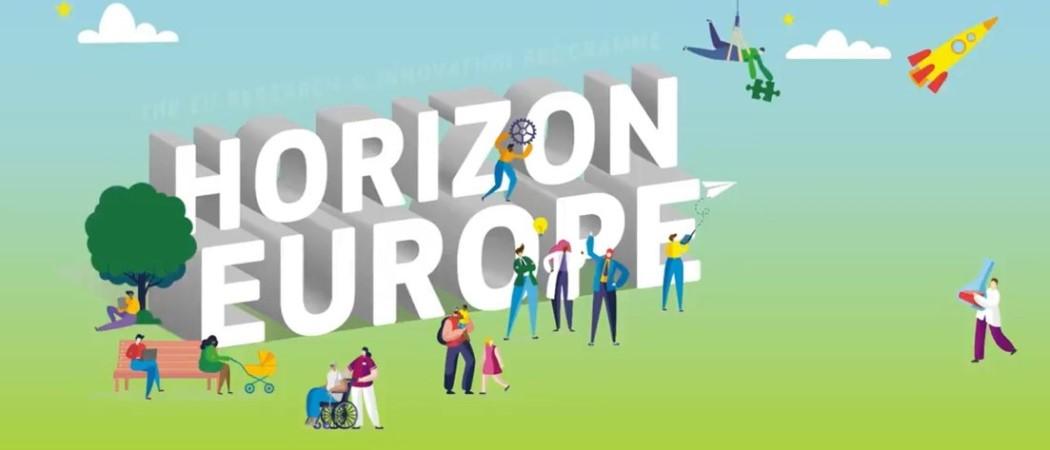The increased budget, continuity, and side lining the UK and Switzerland, are seen as contributing to an increase in success rates for researchers applying for EU grants. But some warn it’s too early to assume the improvement will be sustained

Success rates for researchers applying for Horizon Europe grants stand at 15.8% according to preliminary data, an improvement on the ‘unacceptably low’ level of 12% in the previous EU research programme, Horizon 2020.
A year and a half into the seven-year programme, this is being read as a positive early sign because EU research programmes are infamous for not being able to finance all the proposals that peer reviewers deem worthy of support. It’s also seen as good for the overall quality of the programme, because low success rates are thought to deter excellent researchers from taking the time to apply for funding.
However, researchers are divided over the significance of the 3.8% improvement. To some, it’s a sign EU research and innovation budgets must keep growing. Others are not convinced initial success rates will be maintained in the coming months and years. All are careful to not draw far-reaching conclusions based on preliminary figures.
Jan Palmowski, secretary general of the Guild of European Research-Intensive Universities, says the rise from unacceptably low success rates is a reason to boost funding, especially at a time when EU member states are attempting to cut spending for next year.
“The increasing success rates are a direct response of increased funding. That is why budget cuts proposed by the Council for next year would have a devastating impact on excellent research proposals that could then not be funded,” Palmowski said.
Lidia Borrell-Damián, secretary general of Science Europe, believes the non-participation of the UK and Switzerland in the programme has boosted success rates. The two countries were major beneficiaries of the Horizon 2020 programme. Now, there’s more money to go around the rest of Europe. “It’s not a solution, but it is expected,” said Borrell-Damián.
The increased budget is also playing a part, but Borrell-Damián believes it is having a lesser impact than non-association of the UK and Switzerland.
In addition to the increased budget, Massimo Busuoli, head of Norwegian University of Science and Technology’s (NTNU) Brussels office, highlights the importance of continuity between the programmes, enabling researchers to smoothly transition to the new one. They know which calls to apply to and how to draft their proposals.
“This shows the continuity the Commission kept between one programme to the other is paying back, because the people have learnt how to apply for H2020 projects and now the systems are running smoothly,” says Busuoli.
Thomas Estermann, director for governance, funding and public policy development at the European University Association (EUA), says any improvement at this stage of Horizon Europe must be taken with a grain of salt. Comparison is difficult as the structure of the programme is very different and success rates tend to be high at the beginning of most EU research programmes. In the first 100 calls of Horizon 2020, the success rate hovered around 14%, but later fell back.
As of today, the Horizon Europe dashboard lists 2,410 signed grants involving 15,441 organisations, with €6.49 billion spent. The spending reported thus far equates to 6.8% of the €95.5 billion seven-year budget, but Commission sources note lower spending was also observed at the beginning of Horizon 2020.
As more and more grants are signed, the figures will be updated each month. Busuoli notes NTNU has 53 projects that are set to receive funding, with 30 currently accounted for in the statistics.
Top marks are not good enough
The rise in success rates is a positive sign, but a change of a few percentage points may not be enough to address the key issue - that Horizon Europe cannot fund all excellent proposals. And there are huge financial and time costs attached to submitting projects that get turned down.
One recent proposal submitted by researchers at the NTNU, Busuoli said, was put on the reserve list despite receiving 15 out of 15 in the evaluation. The quality of proposals submitted to EU research programmes means even a perfect score cannot guarantee funding and the fact that so many proposals are rejected definitely does not mean that is because they are of low quality. “It’s not a bad signal. It’s a signal there are more ideas put on the table,” says Busuoli.
Still it’s clear there will never be enough EU money to fund all the good ideas.
For Estermann, one way round this constraint is a more intelligent deployment of European budgets, shifting money from other programmes to research and innovation. EU legislation allows and encourages the use of both the structural funds and the pandemic recovery fund for research, but whether the member states will seize this opportunity remains in question.
“I hope people will not say that we have a bigger success rate and it’s all great,” says Estermann. “What we should be saying, is that the success rate still leaves a lot of excellent proposals unfunded, and what can we do in order to fund them?”
Busuoli agrees that attempts to mobilise money from other funds have often been underwhelming due to low take up in member states. The Seal of Excellence scheme giving excellent proposals that failed to receive EU funding a badge signalling its quality to member states, has not been taken up by all countries. And the excellent ideas keep flowing. “The more money we put in, the more good proposals we are rushing to get. It’s a dog chasing its tail,” Busuoli says.
Elsewhere on the dashboard
Switzerland and the UK are still around. Left out of Horizon Europe, Swiss and UK based organisations can no longer get money from Horizon Europe or lead projects, but they’re still partnering up with European counterparts.
UK-based organisations have signed 417 Horizon Europe grants, or 17.3% of the total grants signed. Switzerland is involved in 246 projects, representing 10% of the grants, around the same percentage as in Horizon 2020.
Palmowski sees this as a positive sign that, despite the political struggles, the researchers are still part of the programme. “What these figures also show is that researchers in the UK continue to be part of the success of European programmes for research and innovation, and it is critical that we ensure that this continues to be the case, for the UK and Switzerland.”
But Borrell-Damian is unsure if their continuing participation will turn the tide on Switzerland and the UK’s bid to be fully associated to Horizon Europe. “Of course, it’s encouraging to see they are still signing contracts and that it’s part of their government commitment to keep a foot in Horizon Europe. Now, whether this can consolidate in an opening renegotiation is another matter full of unknowns,” she says.
Widening success
The 15 EU countries that got the least money out of Horizon 202 are doing slightly better under Horizon Europe. Their success rate stands at 13.6%, closer to the overall member state average of 14.2%. They’re also getting 8.7% of the funding, while in Horizon 2020 the percentage was below 6%.
It’s too early to say whether the new measures for increasing the participation of Widening countries are working, but Commission sources express cautious optimism.
But it’s not the end of the story. As Borrell-Damian noted, there is still a long way to go in achieving sustainable brain circulation flows in Europe. Excellence remains concentrated in research hot spots, an issue that still remains to be tackled.





 A unique international forum for public research organisations and companies to connect their external engagement with strategic interests around their R&D system.
A unique international forum for public research organisations and companies to connect their external engagement with strategic interests around their R&D system.